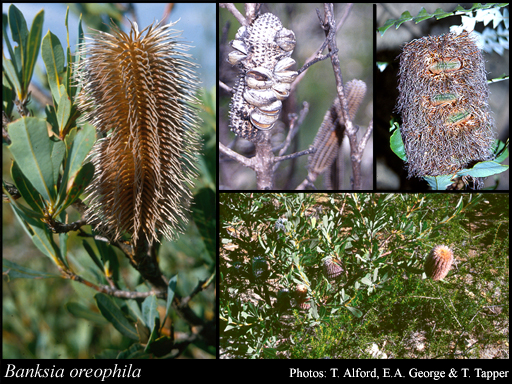- Reference
- Nuytsia 3:316-317 (1981)
- Conservation Code
- Not threatened
- Naturalised Status
- Native to Western Australia
- Name Status
- Current
Much-branched, non-lignotuberous shrub, 0.5-3 m high. Fl. blue-purple/red-brown-other, Mar to Apr or Jun to Aug or Oct to Nov. Rocky or shale soils, usually quartzite, sandstone or granite. Upper slopes & summits of low mountains.







Scientific Description
Shrubs, 1-2.5 m high; branchlets glabrous. Leaves petiolate, alternate, 30-85 mm long, 9-22 mm wide, hairy; petiole 0 mm long; lamina flat, clearly widest above the middle, once divided, pinnately divided, entire or shallowly divided, teeth pointing outwards, with 2-6 lobes on each side, the margins flat. Inflorescences pubescent (with soft, straight, erect hairs), pink or brown; innermost bracts 6-8 mm long, hairy. Perianth 15-20 mm long, hairy, all over, limb apex pubescent (with soft, straight, erect hairs), awned; pistil 15-18 mm long, curved, style glabrous. Follicles hairy, pubescent (with soft, straight, erect hairs), elliptic or oblong, 20-29 mm long. Flowers in March, April, May, June, July, August, September, October or November. Occurs in the South-west (SW) Botanical Province(s), in the Swan Coastal Plain (SWA), Avon Wheatbelt (AW), Jarrah Forest (JF) or Esperance Plains (ESP) IBRA subregion(s).
Distribution
- IBRA Regions
- Avon Wheatbelt, Esperance Plains, Jarrah Forest.
- IBRA Subregions
- Fitzgerald, Katanning, Southern Jarrah Forest.
- IMCRA Regions
- WA South Coast.
- Local Government Areas (LGAs)
- Cranbrook, Gnowangerup, Jerramungup, Plantagenet, Ravensthorpe.